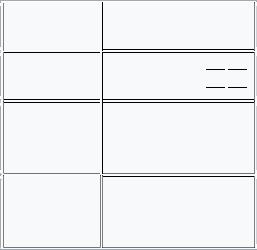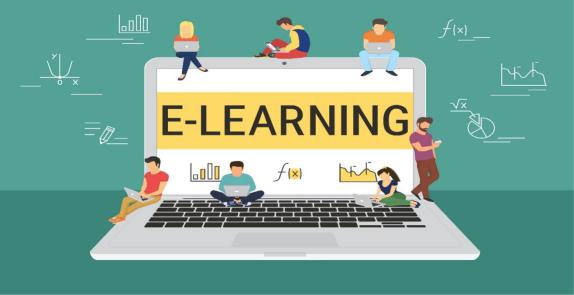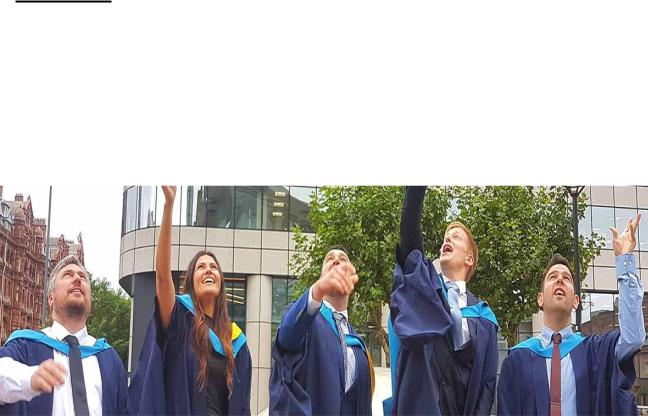
10153
.pdf
11
8.Faculty of Medicine in Plzeň
9.Faculty of Medicine in Hradec Králové
10.Faculty of Pharmacy in Hradec Králové
11.Faculty of Arts
12.Faculty of Science
13.Faculty of Mathematics and Physics
14.Faculty of Education
15.Faculty of Social Sciences
16.Faculty of Physical Education and Sport
17.Faculty of Humanities
Its academic publishing house is Karolinum several museums and two botanical gardens.
Campus Urban
Colors Red and White 



Affiliations
Coimbra Group EUA
Europaeum
Website
www.cuni.cz/UKEN-
1.html
Press. The university also operates
Charles University does not have one joint campus. The academic facilities occupy many locations throughout the city of Prague and three of the faculties are located in other cities – two of them in Hradec Králové and one in Pilsen. The historical main building from the 14th century called Carolinum is situated in the Old Town of Prague and constitutes the university's center. It is the seat of the rector and of the Academic Senate of Charles University. Carolinum is also the venue for official academic ceremonies such as matriculations or graduations.
The Botanical Garden of Charles University, maintained by its Faculty of Science, is located in the New Town.
According to Academic Ranking of World Universities (Shanghai Ranking), Charles
University ranked in the upper 1.5 percent of the world’s best universities in 2011. It is the best university in the Czech Republic and one of the best universities in Central and Eastern Europe only overtaken by Russian Lomonosov Moscow State University at 74th place.
12
Rector of the University Václav Hampl said in 2008: “I am very pleased that Charles University achieved such a great success and I would like to thank all who have contributed to it. An overwhelming majority of schools with a similar placement like Charles University have incomparably better financing and therefore this success is not only a reflection of professional qualities of our academics but also their personal efforts and dedication.“
The academic year is divided into two semesters – a winter semester, starting in October, and a summer semester, starting in February. In each semester, there are 13 weeks of teaching and an examination period of 5 weeks. The courses are mostly in the form of lectures and recitations. The lectures cover the theoretical underpinnings of the subject, and there is time for applications of the theory in the recitations. The schedule of the faculty consists of 45-minute lessons with 5-minute breaks, and most of the lectures and recitations are organized as 90-minute long blocks of two such lessons once or twice a week. Attendance of lectures and recitations is usually not obligatory, but is strongly recommended. Mastery of a subject is confirmed by course credit and/or by an exam. Course credits (usually for recitations) are awarded at the end of the semester. The conditions for obtaining a course credit differ according to the nature of the course, from completing a test to programming an application or writing a survey. Exams are taken during the 5-week examination period and can be oral or written.
Bachelor’s Degree Programme in Computer Science
The bachelor study programme in Computer Science is intended for students who would like to learn the lasting foundations of computer science and to become proficient in its methods and approaches. A soundly built theoretical base is invaluable for working with applications and software development, and is a necessity for further study and research in computer science. The study programme usually takes three years to complete, and ends with a state final examination, after
13
the successful completion of which the student is awarded the title of Bachelor of Science. The degree awarded is accredited by the Ministry of Education, Youth, and Sports of the Czech Republic and is internationally recognized. The language of instruction is English.
In the first year, there are basic mathematical courses (Mathematical Analysis 1, Linear Algebra 1, Linear Algebra 2, Discrete Mathematics) and introductory courses in algorithms (Introduction to Algorithms, Algorithms and Data Structures 1), programming (Programming 1, Programming 2) and computers (Principles of Computers, Introduction to Networking, Introduction to Linux).
During the second year students learn further mathematical theory (Combinatorics and Graph Theory 1, Mathematical Analysis 2, Propositional and Predicate Logic, Probability and Statistics 1), as well as the theoretical basics of programming and computers ( Algorithms and Data Structures II, Automata and Grammars, Database Systems). In the second year, students are also required to learn some practical programming and to present an Individual Software Project. Students choose other courses according to their individual needs and interests and they select which of the six specializations they would like to pursue:
General Computer Science,
Programming and Software Development,
System Programming,
Databases and Web,
Artificial Intelligence or Computer Graphics,
Vision and Game Development.
During the third year students choose courses according to their specialization and they are expected to work on their bachelor’s thesis.
Studies in the programme are concluded with the state final examination.
14
Graduates from the programme are familiar with the fundamentals of mathematics and computer science. They have both theoretical and practical experience with programming and basic knowledge in more specific areas, according to their choice of advanced classes. The skills acquired provide a good background for a follow-up master’s degree, as well as sufficient knowledge for immediate employment.
Graduates are able to perform well in any position where logical thinking is required. They may also work as programmers or network administrators.
Want to know more? – https://fsv.cuni.cz/en
1.10 Prepare a similar description of the university and the department you are
studying at now.

15
2 Distance Learning
2.1 What is distance learning?
…………………………………………………………………………………………
…………………………………………………………………………………………
2.2 Can you think of advantages and disadvantages of this method of study? Jot down your ideas in the table below:
|
Distance Learning |
|
|
|
|
Advantages |
|
Disadvantages |
|
|
|
…?… |
|
…?… |
|
|
|
2.3Compare the results with your partner. Have you got different answers? Have you got any similar points?
2.4Read the article From a Distance about distance learning.
distance learning n [U] a method of study that involves using electronic means (computers, Internet, etc.) to receive and send work rather than going to a school or university

16
From a Distance
A Brief History of Distance Learning
“Knowledge”, according to the proverb “is power”. And in this electronic age, more and more of our information is gained not in the classroom, but via media such as the Internet, etc., all of which are playing a key part in the distance learning revolution. Here are three figures in this key educational change which is transforming our lives in the 21st century…
Sir Isaac Pitman
Those who think that distance learning is a relatively new idea might be surprised to learn that English educator, Sir Isaac Pitman, had the same idea – only then they were called correspondence courses – more than 150 years ago. Taking advantage of the development of a reliable postal system in 1840, Pitman began teaching shorthand* by mail to thousands of students who did not have time to attend school. “Lessons” consisted of copying short passages of the Bible in shorthand, and posting them to Mr. Pitman to be corrected. His brother, Benn Pitman, introduced the idea to the United States, and the Pitman shorthand system – which has been adapted to fifteen other languages – is still one of the most widely used shorthand systems in the world.
shorthand* – a system for writing down what people are saying using special signs to
represent words, letters and phrases.
The Open University
When it was established in 1969, the Open University offered courses via mail, with the back-up of regular TV and radio programmes shown outside normal broadcast times. Each student was assigned a tutor who discussed the course work over the phone, and in group sessions in the evenings or at weekends. Thirty years on, the Open University has expanded to include the Internet,

17
videoconferencing, satellite broadcast and email. There are no entry qualifications or admission interviews, and anyone over the age of 18 can follow one of their courses. It is now …
John Hendricks and The Discovery Channel
After a successful career in university education, John S Hendricks entered the TV business and launched the Discovery Channel – the first cable TV channel exclusively devoted to documentaries and nature programmes – in June 1985.
The company’s programmes reached over 150 million subscribers in more than a hundred countries. In an age where competition for TV audiences had never been tougher, the Discovery Channel’s high-quality, educational approach continued to defy those who believed that TV was only about mindless entertainment. The BBC programme Walking with Dinosaurs became the most-watched documentary in TV history when it was shown on the Discovery Channel in 2000. Today …
Having read the article about distance learning, give the answers. According to the text:
1) |
Who first had the idea of teaching |
Sir Isaac Pitman |
|
shorthand by correspondence? |
………………………………… |
2) |
Who took the idea of correspondence |
|
|
courses to the United States? |
……………….………………... |
3) |
What three methods were originally used |
|
|
for course work by the Open University? |
………………………………… |
|
|
|

|
18 |
|
4) |
What entry qualifications are required to |
|
|
||
|
do a course at the Open University? |
………………………………… |
5) |
What type of programmes are shown on |
|
|
the Discovery Channel? |
………………………………… |
6) |
What programme attracted the most |
|
|
viewers ever for a TV documentary? |
…………………………………. |
|
|
|
2.5 Consult the Internet sites to complete the unfinished sentences in the text.
1)It is now …
2)Today …
https://www.discoveryuk.com
http://www.open.ac.uk/about/main/

19
3 Education Systems
3.1Go over the following statements and tick them if they are true in your country. Then have a close look at the rest of the statements and correct those that are not true. Discuss the results with your partner.
More and more people are doing online courses.
Lectures are often attended by more than 500 students.
There are skills shortages in many areas, so older people are being encouraged to go back to college and do refresher courses.
More than two thirds of lecturers in tertiary education are women.
Children at elementary school are required to wear a uniform.
Children start learning the Three Rs at the age of about six.
Secondary school students can do vocational courses as well as courses in academic subjects.
The academic year begins in October.
Many postgraduates have to pay a fee.
As a rule, the most prestigious universities are private institutions.
3.2Would you like to change anything in the education system in your country?
1. …?… |
2. …?… |
3. …?… |
Discuss your ideas in groups.
20
3.3 Read the following information in the left column about schools in England. What paragraph would you write in the right column about secondary education in your country?
|
|
|
Schools in Britain |
|
|
|
|
Secondary education in my |
||||
|
|
|
|
|
|
|
country |
|||||
|
|
|
|
|
|
|
|
|
|
|
|
|
Schools |
in |
England |
are |
becoming |
|
|||||||
very exam-oriented, with children |
|
|||||||||||
taking |
their |
first |
public |
exams |
…?… |
|||||||
|
|
|
|
|
|
|
|
|
|
|
|
|
(SATS) at 7. There are |
more |
|
||||||||||
important |
public |
exams |
for |
pupils |
|
|||||||
at |
16 |
(GCSEs), |
17 (AS |
levels) |
and |
|
||||||
18 (A levels), and schools are |
|
|||||||||||
required to publish the results of |
|
|||||||||||
all these public exams. The results |
|
|||||||||||
are then used to compile league |
|
|||||||||||
tables which show, among other |
|
|||||||||||
things, the schools with the best |
|
|||||||||||
exam |
results. |
|
Schools |
who |
do |
|
||||||
particularly well are given the |
|
|||||||||||
status of ‘beacon’ school and |
|
|||||||||||
receive increased |
financial |
support |
|
|||||||||
from the local authorities. More |
|
|||||||||||
recently, |
the |
|
government |
has |
|
|||||||
introduced performance-related pay |
|
|||||||||||
for |
teachers, |
meaning |
|
that |
good |
|
||||||
exam results earn teachers a better |
|
|||||||||||
salary. |
|
|
|
|
|
|
|
|
|
|
||
|
|
|
|
|
|
|
|
|
|
|
|
|
